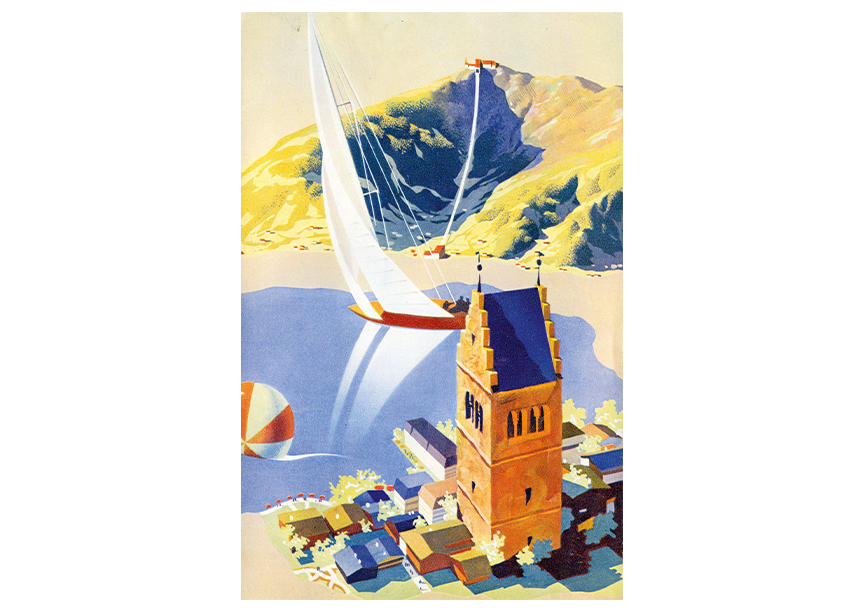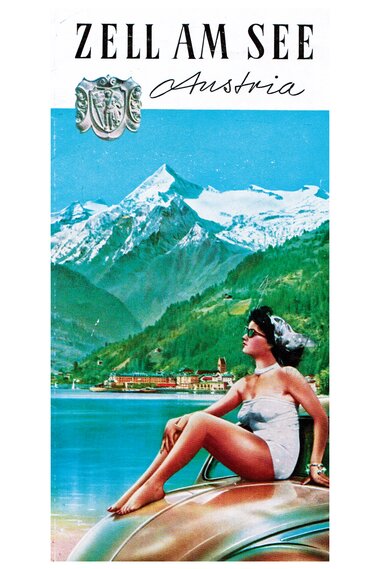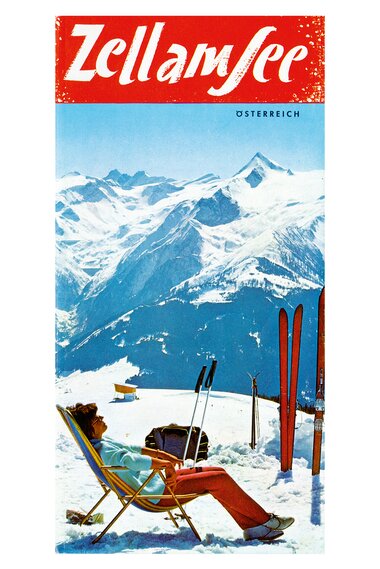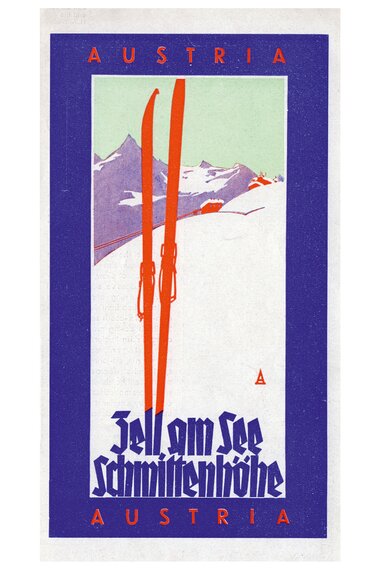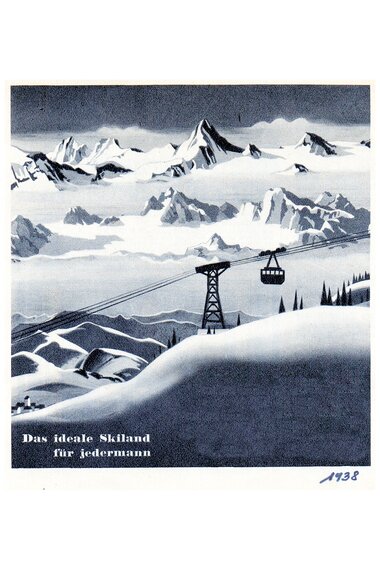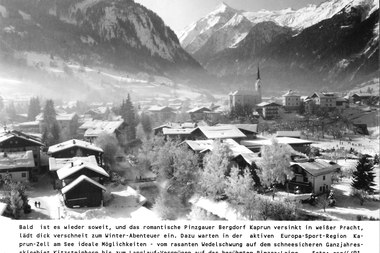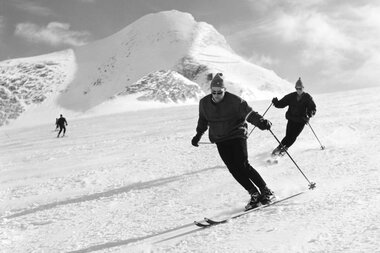historical postcards and posters
Long before you could admire the most beautiful snapshots from Zell am See-Kaprun via social media stories and reels, people relied on the power of images: This is demonstrated by the historic postcards and posters that put the mountain world around Schmittenhöhe and Kitzsteinhorn as well as Lake Zell in the most beautiful light.
The images promise a paradise: Lake Zell shimmers turquoise blue and green, with forest-covered mountain slopes rising into the sky behind it. The next image depicts a woman in a swimming costume having chosen a sunny spot by the lake, with the striking Kitzsteinhorn in the background. The region also presents itself as a place of longing in winter: completely relaxed, a female skier (most likely after many successful downhill runs) poses in a deck chair on the Schmittenhöhe, in top winter weather with blue skies and snow-white peaks. If you think we're just scrolling through the Instagram feed of Zell am See-Kaprun - you're wrong! We went on a journey through time and discovered how the region made a name for itself as a place of longing on posters and postcards early on.

Landscape painters as advertising ambassadors
There were of course no smartphone cameras and single-lens reflex cameras yet, so it was mainly painters who brought the region's special features out into the world: they captured the Kitzsteinhorn, the panorama from the Schmittenhöhe, the town parish church, the Vogtturm tower and the extraordinary flair between mountains and lakes with brush and paint. Especially Hubert Sattler, Edmund Höd and also Edward Theodore Compton shaped the image of the region in the 19th century. The first panoramic image of the Schmittenhöhe with the mountain town of Zell am See and Lake Zell below was created in the 1870s - long before the construction of the railway ensured that more and more visitors discovered Zell am See and Kaprun as holiday resorts.
The pictures were then used for targeted advertising, at the beginning mainly of Zell am See, from 1875 onwards. This was when the forerunner of the tourism association was founded, at that time still with the auspicious name "Verschönerungsverein" (Beautification Association).
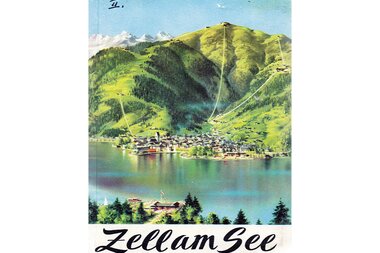
Imagination instead of image editing
Apart from the beautification association, individual businesses also used the pictures for advertisement early on. The Berghotel at the top of the Schmittenhöhe, the Grand Hotel or even Hotel Elisabeth, which was built right next to the railway station in Zell am See, used the painted views to attract new guests. By the way, a few tricks were used to make the pictures even more beautiful. As filters or image editing programmes were not available back then, imagination was used instead. This is demonstrated, for example, in the famous view of the lakeside promenade with Hotel Elisabeth and the Kitzsteinhorn in the background: Kaprun's local mountain is not visible from this position.
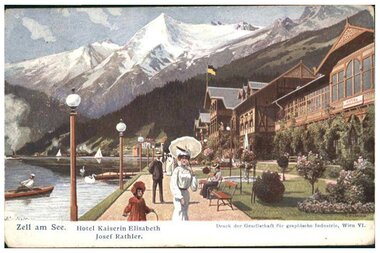
Skiing as a favourite motif
In 1927, the Schmittenhöhe cable car was finally built. It made the ascent much more comfortable for hikers and skiers, and further boosted tourism in the region. During this time, skiing also experienced its first boom in western Austria: winter landscapes and deep-snow slopes with individual ski tracks became a popular advertising motif. Many postcards and posters now also featured the cable car, but the main focus remained on the region's unique panorama with the lake and mountains in the background.
Skiing was promoted more and more with large-scale events in the following years, and ski sports experienced a real boom in the 1960s and 1970s.
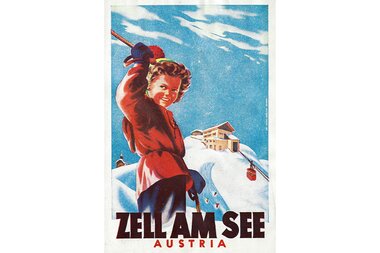
The Kitzsteinhorn is conquered
And something else changed: While the focus in the region had previously been more on Zell am See, Kaprun also became a popular holiday destination with the opening of Austria's first glacier ski resort on the Kitzsteinhorn. An aerial cableway, divided into two sections up to the Alpincenter, brought the first skiers to the Kitzsteinhorn on 12 December 1965 - the beginning of a new era. In 1966, the opening of the third section of the aerial cableway finally made it possible to reach the summit terminus at 3,029 metres. This great innovation and technical feat were of course captured on postcards of the time!
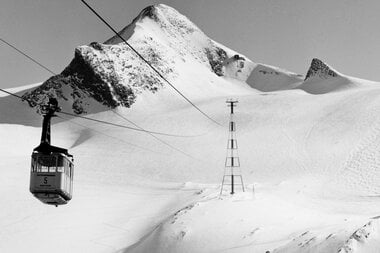
The ever-growing range of facilities for tourists was also to be depicted on posters: But it was not easy to fit all the attractions from Lake Zell to the Kitzsteinhorn into one picture. After all, at that time it was not yet possible to post new pictures several times a day or to share videos with all the experiences in the region.
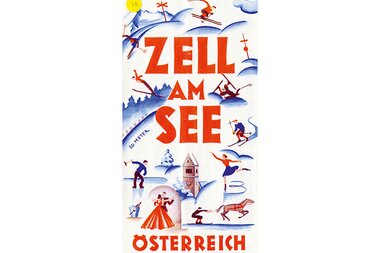
A look at advertising history: then and now
The historical posters and postcards are not only a throwback to old times, they also show how much the language of images and advertising has changed over time: Today, tourist imagery is calmer, emotions and mood are in the foreground. Moreover, thanks to smartphones, every visitor to the region can now become a "landscape painter" and share their own posters and postcards of Zell am See-Kaprun. I wonder what Hubert Sattler, Edmund Höd and Edward Theodore Compton would say about that?
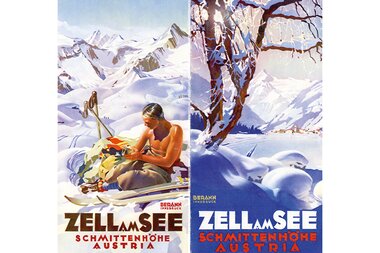
More stories in the "Gold Edition"
Thank you for joining us on a journey through time! Did you enjoy it? You can find more stories like this in the current issues of Gold Magazin Zell am See and Pinzgau. You can order them here for free.

